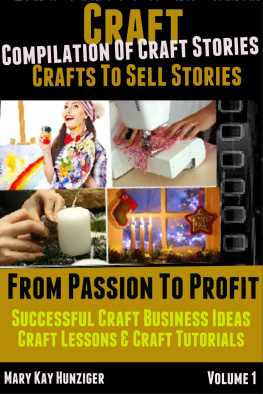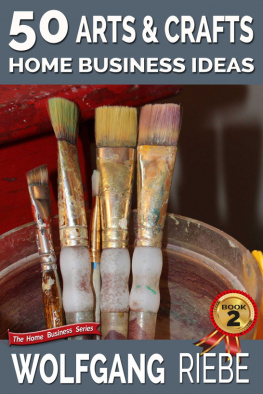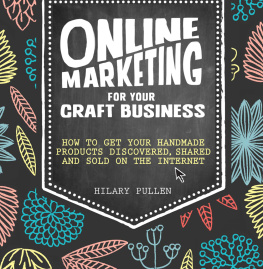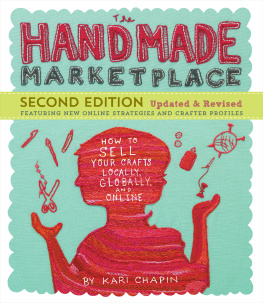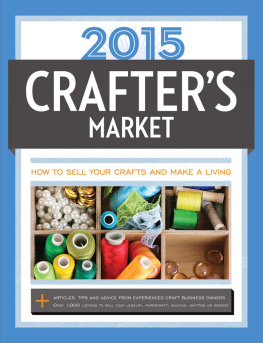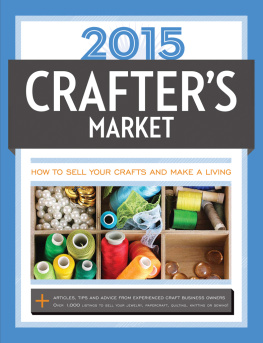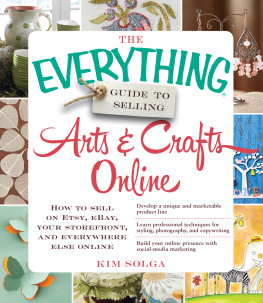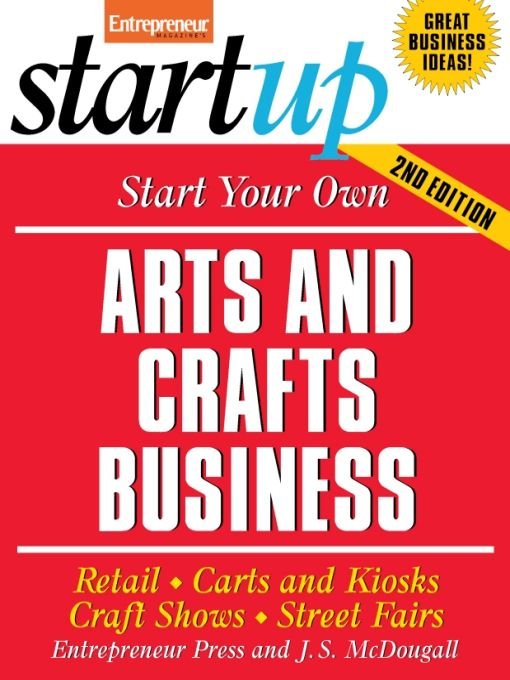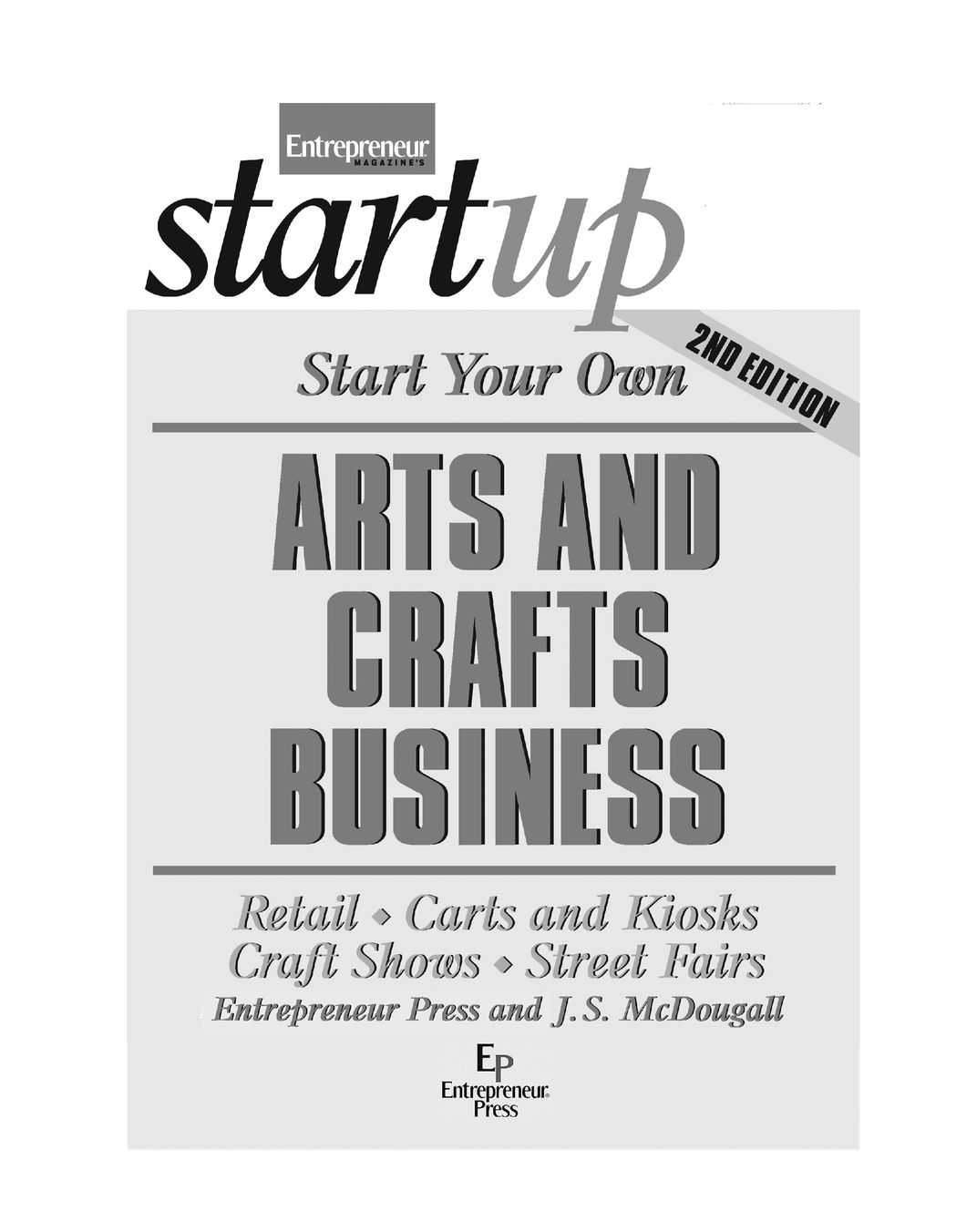Table of Contents
Additional titles inEntrepreneursStartup Series
Start Your Own
Bar and Club
Bed & Breakfast
Business on eBay
Business Support Service
Car Wash
Child Care Service
Cleaning Service
Clothing Store
Coin-Operated Laundry
Consulting
e-Business
e-Learning Business
Event Planning Business
Executive Recruiting Service
Freight Brokerage Business
Gift Basket Service
Growing and Selling Herbs and Herbal
Products
Home Inspection Service
Import/Export Business
Information Consultant Business
Law Practice
Lawn Care Business
Mail Order Business
Medical Claims Billing Service
Personal Concierge Service
Personal Training Business
Pet-Sitting Business
Restaurant and Five Other Food Businesses
Self-Publishing Business
Seminar Production Business
Specialty Travel & Tour Business
Staffing Service
Successful Retail Business
Vending Business
Wedding Consultant Business
Wholesale Distribution Business
Preface
Regardless of the particular type of arts and crafts business you want to start, this book will tell you how to do it. Well start with an overview of the industry, look at some specific arts and crafts businesses, and then go through the step-by-step process of setting up and running your exciting new venture.
Youll learn about basic requirements and start-up costs, daily operations, and what to do when things dont go according to plan. Youll gain a solid understanding of the sales and marketing processes, as well as how to track and manage the financial side of your business. Throughout the book, youll hear from crafters who have built successful businesses and are eager to share what they learned in the process.
Whether you plan to start a part-time business by yourself or you have the more ambitious goal of crafting full time with a storefront and employees, we recommend that you read every chapter in this book. The information throughout applies to all sizes and types of crafts businesses, and the chapters are interrelated.
The market potential is tremendous. A few years ago, small arts and craft businesses were limited to local trade shows, craft fairs, and tourist shops. Today, the world is your playground. The extensive reach of the internet and the explosive popularity of online shopping means that your cuckoo clocks, or handmade furniture, or decorative paintings can find untapped markets in India, Australia, Scotland, or Timbuktu! The growth of your business will be limited only by your desire and available time.
One of the largest challenges facing you as an artist or crafter will be learning to swallow your pride for the sake of making a sale. Hobbyists have the luxury of creating only what they like and selling only what appeals to other people. Businesses must meet the demands of their customers, which, for artists, often means compromising their art for the sake of income. Unfortunately, thats part of being in business instead of just having a hobby.
Like anything else, theres no magic formula, no quick path to success. Your crafts business will definitely not be a get-rich-quick operation. But it can be a substantial revenue-generator for you.
We believe business should be fun as well as profitable, therefore we designed this book to be logical, informative, and entertaining. We want you to enjoy yourself as you read. Just one word of warning: Take the time to sit back and relax now, because once your crafts business is up and running, youre going to be a very busy person!
Making It Yourself
Assembly lines around the world are churning out mass-produced items that are purchased almost as fast as they can be made. Everything from baskets to furniture to pottery to paintings are being crammed by the ton into container ships and distributed around the world. But consumer acceptance of low-cost, look-alike goods hasnt eliminated the demand for authentic handcrafted itemsalthough they are likely to have a much different function today than in the past.
Many handcrafted items are now valued as works of art. Historically, though, their value was primarily utilitarian. For example, baskets and pottery were essential for transporting food, water, and other items. Weaving produced fabrics that could be made into clothing and blankets.
The industrial revolution remade our society so that the need for functional handcrafted items is now not as extensive as it once was. But Americans who want quality and authentic artistic and decorative items turn to modern-day craftspeople who produce a variety of items such as jewelry, ceramics, wood carvings, furniture, crocheted and knitted goods, decorated clothing, toys, and much more.
What Are Arts & Crafts Anyway?
Art eludes definition and always has. From writing to pottery and Wordsworth to Picasso, art spans all time and media. Therefore, for the sake of this book, we will be reigning in the definition of art to mean simply artistic crafts meant for decoration. Dont think of this definition as limiting, think of it as manageable. Under this definition we can still fit, and consider, decorative paintings, needlework, jewelry, wreaths, pins, and plenty more.
In this book, craft refers to any handmade item that can be given as a gift or soldand if youve attended a crafts fair, you may have been surprised by what craftspeople sell and what people are willing to buy. The unpredictability of the crafts market is one of the intriguing and challenging aspects of the business.
Stat Fact
According to the Hobby Industry Association, more than four out of five U.S. households have at least one family member engaged in crafts/hobbies; 77 percent use their crafts as gifts, 71 percent for personal use, 63 percent specifically for home decorating, 47 percent for holiday decorations. Fifteen percent sell their crafts.
In Craft Today: Poetry of the Physical (Grove Press), Paul J. Smith writes, In its broadest sense craft refers to the creation of original objects through an artists disciplined manipulation of material. Historically craft was identified with producing objects that were necessary to life. Modern industrialized society eliminates the need to make by hand essentials for living. The term craft now must be defined in the context of a society that focuses on greater efficiency by technological achievement.
The question of whether crafts are art or a separate medium may never be definitively answered. In The Crafts of the Modern World, Rose Slivka writes, Throughout their long history, crafts have produced useful objects which are later considered fine art. Time has a way of overwhelming the functional value of an object that outlives the men who made and used it, with the power of its own objective presencethat life-invest quality of being that transcends and energizes. When this happens, such objects are forever honored for their own sakesthey are art.



